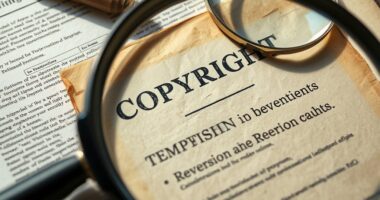When you plan to use a sample in your music, it’s essential to get clearance beforehand. Start by identifying the rights holders, such as record labels or publishers, and clarify what permissions you need. Negotiate licensing agreements, outlining how you’ll use the sample, any restrictions, and fees involved. Keep detailed records of all communications and agreements to protect yourself legally. Continuing will help you understand the steps to properly clear samples and avoid legal troubles.
Key Takeaways
- Obtain permission before using any copyrighted sample to avoid legal issues and ensure compliance.
- Identify and contact rights holders such as record labels, publishers, or artists early in the process.
- Secure written licensing agreements detailing usage scope, restrictions, duration, and royalties.
- Keep detailed records of all permissions and correspondence as proof of legal clearance.
- Even short samples require clearance; never assume free use without proper authorization.

Navigating the world of sample clearance can seem intimidating, but understanding the basics helps you avoid legal pitfalls and delays. When you want to incorporate a segment of an existing recording into your own work, rights management becomes a key concern. Rights management involves identifying who owns the rights to the original work and understanding what permissions are necessary for use. This process ensures you’re not infringing on someone’s intellectual property. The first step is to track down the rights holders, which may include record labels, publishers, or individual artists. Once you know who owns the rights, you’ll need to secure the appropriate permissions through licensing agreements. These agreements specify how you can use the sample, any restrictions involved, and the compensation owed to rights holders. Without proper licensing, you risk copyright infringement, which can lead to legal action, financial penalties, or your work being taken down.
Understanding licensing agreements is vital because they outline the scope of your rights to use the sample. Some licenses may allow for limited use, such as non-commercial projects, while others might permit broader applications. Always read these agreements carefully, paying attention to the duration, territory, and specific rights granted. If you’re unsure, consulting a legal expert can help you interpret the terms and avoid accidental violations. Remember, even a short sample can be protected by copyright, so assuming it’s free to use is a risky mistake. Additionally, knowing about juice cleanses can be useful if your project involves health or wellness themes, as they are popular topics that often require proper licensing if referenced directly. Once you’ve secured the necessary licenses, keep detailed records of all correspondence and agreements. This documentation can serve as proof of your legal rights to use the sample if any disputes arise later. It’s also wise to establish clear communication with rights holders early in the process to prevent misunderstandings. Some rights holders may require upfront payment, while others might grant permission in exchange for royalties or a one-time fee. Negotiating these terms upfront can save you time and money down the line.
Frequently Asked Questions
How Long Does Sample Clearance Typically Take?
Sample clearance usually takes anywhere from a few weeks to a couple of months, depending on the sample duration and complexity of the clearance process. You should plan ahead, as the clearance timeline can vary based on the rights holder’s responsiveness and the specifics of your sample. To avoid delays, start the process early, provide clear information, and follow up regularly to make certain a smooth and timely clearance.
What Are Common Reasons for Clearance Denial?
Imagine your request for sample clearance gets denied because the copyright holder refuses licensing agreements. Common reasons include the sample being too recognizable or the use risking market confusion. If your sample infringes on someone’s copyright or licensing agreements, clearance is unlikely. You might also face denial if your proposed use threatens the original creator’s rights, emphasizing the importance of respecting sample copyright and securing proper licensing agreements before proceeding.
Can I Use Samples Without Clearance in Educational Projects?
You can use samples without clearance in educational projects if you follow fair use guidelines and secure educational licensing. Fair use allows limited use for teaching, research, or commentary, but it’s important to guarantee your use is transformative and doesn’t harm the original market. Always verify specific licensing terms and consider consulting legal experts to avoid infringement, especially when your project might be publicly shared or commercialized.
How Much Does Sample Clearance Usually Cost?
Sample clearance costs vary widely, depending on factors like music licensing, the popularity of the sample, and intended use. You might pay royalty fees ranging from a few hundred to thousands of dollars. You could encounter additional costs for licensing negotiations or legal fees. To stay within budget, research licensing fees, negotiate terms, and plan ahead for costs associated with music licensing, ensuring your project remains compliant and financially viable.
What Are the Legal Consequences of Unapproved Sample Use?
If you use unapproved samples, you face serious legal risks, including lawsuits for copyright or intellectual property infringement. These legal consequences can lead to hefty fines, injunctions, or even criminal charges. Ignoring sample clearance jeopardizes your project’s integrity and could damage your reputation. Always guarantee you obtain proper permission before using samples, protecting yourself from costly legal disputes and respecting the original creators’ rights.
Conclusion
Now that you know the secrets of sample clearance, you’re practically unstoppable! Ignoring these steps could turn your project into a legal nightmare, costing you everything—your reputation, your dreams, your future. Don’t let a simple mistake destroy your masterpiece before it even hits the spotlight. Take action, get those permissions, and protect your work like an unstoppable force. Your future success depends on it—don’t leave it to chance!









